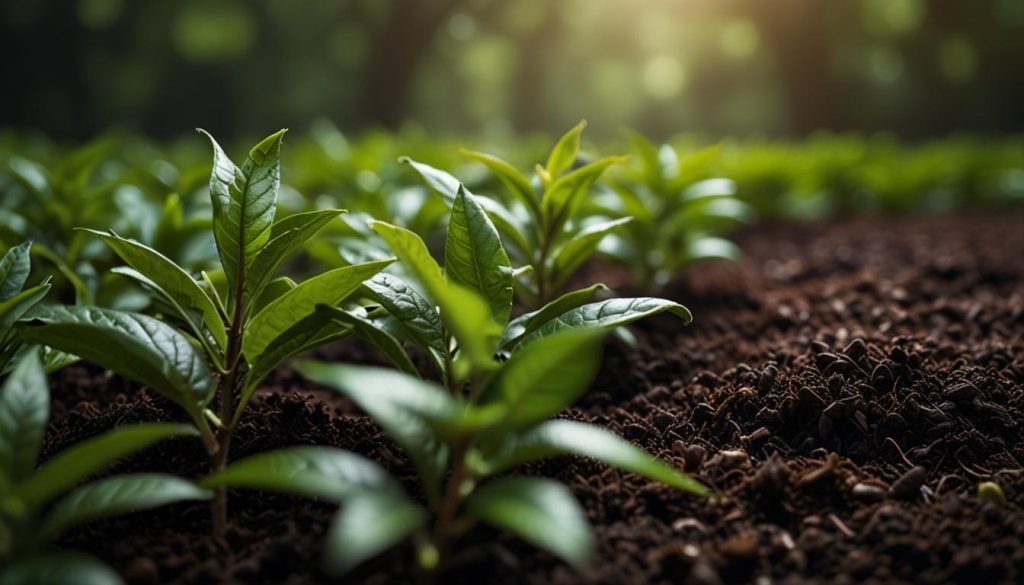As climate shifts threaten tea and coffee production, farmers explore carbon credits to protect their livelihoods and foster sustainable practices.
Climate Change Drives Tea and Coffee Farmers to Explore Carbon Credits
As the global climate evolves, its impact on tea and coffee production brings challenges to regions historically dependent on these crops. Climate shifts are now endangering not only plant cultivation but also the livelihoods of the millions who depend on these industries.
Tea and coffee are not merely commodities; they are economic lifelines. Brazil, the world’s largest coffee producer, cultivates over 3 million hectares of coffee plants, while tea farms in China, India, and Kenya account for more than 4 million hectares combined. These areas provide essential income to millions. However, the reliance on agriculture by smallholder farmers creates a fragile dependency, tested further by climate changes.
For decades, reliable weather patterns fostered optimal conditions for these crops. Rising temperatures, erratic rainfall, decreased soil fertility, and multiplying pests threaten to reduce coffee-growing regions by up to 50% by 2050, according to the International Coffee Organization. Tea production does not fare much better, with projections suggesting a potential 10-20% yield decrease in places like India and Kenya.
Ketan Patel, the fourth-generation owner of India’s Jalinga Organic Tea Estate, highlights the severity of these changes. “The biggest impact is climate change. It’s very tough because tea requires a certain climate from March to December (harvest). In earlier days, you could count on things, but now it is haywire,” Patel says.
The tea and coffee markets, valued together at over $200 billion, support intricate supply chains. They face rising consumer demand for ethical and sustainable products. Consequently, stakeholders are exploring the carbon credit market as a possible mitigation strategy.
Introduced within the Kyoto Protocol in 1997 and continuing under the Paris Agreement of 2016, the carbon credit system aims to curb greenhouse gas emissions. By purchasing credits, emitters fund projects that reduce or offset carbon emissions. This system creates incentives for sustainable practices, holding promise for sectors such as agriculture, forestry, and conservation.
The market is split into two parts: the voluntary carbon market (VCM) and the compliance carbon market (CCM). The VCM allows voluntary offsetting among businesses and individuals, while the CCM enforces compliance with environmental targets. Each segment within the VCM involves various entities, including project developers, standard developers, certification organizations, and registry platforms, all working to ensure system integrity. Still, trust issues persist due to project efficacy and regulatory disparities.
The Jalinga Organic Tea Estate in Assam, India, represents a proactive step towards integrating carbon credits into tea production. By fostering biodiversity and reducing emissions, Jalinga exemplifies how carbon credits can align environmental and economic goals. Colombia’s Solidaridad project employs similar methods, training coffee farmers in sustainable practices like reforesting degraded lands to generate carbon credits.
However, the carbon credit market endures significant challenges. The primary issue is ensuring additionality—the condition that emissions reductions wouldn’t happen without revenue from carbon credit sales. Research reveals that many projects, such as those in forestry, often overstate their impact. The Integrity Council for Voluntary Carbon Markets found that up to 90% of credits from certain certified forestry projects do not represent actual emissions reductions.
Moreover, upfront investments, technical knowledge, and complex certification schemes present barriers, particularly for farmers in developing nations. In Colombia, researchers from CENICAFE note that transaction costs can claim up to 40% of a farmer’s carbon credit sell price, creating a cost-benefit dilemma that deters participation.
Scale also matters. Projects must generate a minimum number of carbon credits to attract large developers, often beyond what smallholder tea and coffee farmers can achieve. Jalinga’s initiative includes producing biofuel from biomass, using biochar to trap carbon, and committing to plant 300,000 trees. They also support out-growers by teaching organic farming practices and providing higher market prices for their crops. Yet, meeting carbon credit project thresholds remains challenging.
Climate change poses an existential threat to these crops. Given their sensitivity to temperature and rainfall changes, tea and coffee farmers risk losing productive land. Carbon credit schemes related to these industries must address adaptation strategies alongside emission reductions. Integrating climate-smart agriculture is critical for these farmers’ survival.
One promising approach is ‘carbon insetting’. Unlike traditional offsetting—which funds external projects to reduce emissions—carbon insetting focusses on reducing emissions within a company’s supply chain. For instance, Nespresso’s agroforestry project planted nearly three million trees in Colombia, Guatemala, and Ethiopia, sequestering carbon while enhancing soil health and biodiversity.
With consumer preferences shifting towards sustainable products, carbon-neutral pathways offer significant market opportunities. Carbon insetting, by directly benefiting local farmers and integrating sustainable practices within the value chain, can enhance the resilience of tea and coffee crops. The Food and Agriculture Organization (FAO) advocates that such methods help farmers adapt to climate change while meeting the demands of climate-conscious consumers.
Insetting fosters closer relationships between companies and farmers, creating a sustainable and resilient future for the industry. It’s a model that offers hope, ensuring the sustainability of these vital crops and supporting the communities that cultivate them.
Source: Noah Wire Services





